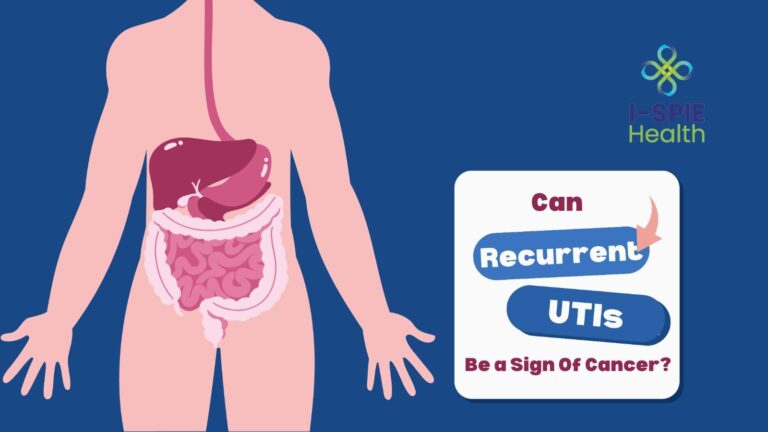Cervical cancer is the second leading cause of cancer in women, both in the US and worldwide, second only to breast cancer and fourth in cancer incidence worldwide. It is primarily caused by HPV (Human Papilloma Virus), however, there are other contributing factors as well.
This blog aims to provide comprehensive information on the types, symptoms, causes, diagnosis, and treatments of cervical cancer, empowering patients and their loved ones with the knowledge needed to navigate this challenging diagnosis.
What is Cervical Cancer?
The cervix is the lower part of the uterus that connects to the vagina. Cervical cancer occurs when the cells of the lining of the cervix develop abnormally into cancer cells. Of the cervix. It is primarily caused by persistent infection with high-risk types of human papillomavirus (HPV) that is transmitted via sexual contact.
In most cases, the immune system is able to clear HPV from the body. However, persistent infection with high-risk HPV can cause abnormal cells to arise, which can then transform into cancer. Initially, cervical cancer tends to grow slowly and can be effectively managed and treated if detected early.
Symptoms and Causes
Symptoms
- Abnormal Vaginal Bleeding: Bleeding after intercourse, between periods, or after menopause.
- Unusual Vaginal Discharge: Watery, bloody, and possibly foul-smelling discharge.
- Pelvic Pain: Pain during intercourse or at other times.
- Pain During Urination: This could indicate an advanced stage affecting the bladder.
Causes
The most common cause of cervical cancer is persistent infection with high-risk human papillomavirus (HPV) types. Risk factors include:
- Multiple sexual partners
- Early sexual activity
- Other sexually transmitted infections (STIs)
- Compromised immune system
- Smoking
- Diethylstilbestrol (DES), a form of estrogen used to treat pregnant women between 1940 and 1971
Types of Cervical Cancer
Before the cells of the cervix transform into cancer, the normal cells gradually develop abnormal changes, also known as dysplasia. Dysplasia can be mild, moderate, or severe. There are 2 main types of dysplasia;
- Cervical intraepithelial neoplasia (CIN)
- Squamous intraepithelial lesion (SIL)
There are 3 main types of Cervical Cancers:
Squamous Cell Carcinoma
This type originates in the thin, flat cells lining the outer part of the cervix. It is the most common form, accounting for about 90% of cases.
Adenocarcinoma
Adenocarcinoma begins in the mucus-producing gland cells of the cervix. Though less common, it is on the rise and accounts for about 10% of cervical cancers.
Mixed Carcinoma
Also known as adenosquamous carcinoma, this type includes both squamous and glandular cancer cells.
Read More: Best Treatments For Prostate Cancer In Early Stages
Treatments Of Cervical Cancer
Treating cervical cancer often involves a multidisciplinary approach tailored to the type, stage, and specific characteristics of the cancer, as well as the patient’s overall health and preferences. Below are the primary treatment options:
Surgery
Conization
Conization, also known as a cone biopsy, involves removing a cone-shaped piece of abnormal tissue from the cervix. This procedure is typically used for early-stage cervical cancer or precancerous lesions that are visible only under a microscope. It allows for the removal of abnormal cells while preserving most of the cervix and uterus, which can be important for women who wish to maintain fertility.
LEEP (Loop Electrosurgical Excision Procedure)
LEEP uses a thin wire loop that carries an electrical current to remove abnormal tissue from the cervix. This method is effective for treating precancerous lesions and early-stage cervical cancers. The electrical current helps to cut away the tissue and seal blood vessels, reducing bleeding. LEEP is usually performed in an outpatient setting under local anesthesia.
Hysterectomy
A hysterectomy involves the removal of the uterus and cervix. There are two main types:
- Simple Hysterectomy: Removes the uterus and cervix. This procedure is often used for early-stage cancer or severe precancerous conditions.
- Radical Hysterectomy: In addition to the uterus and cervix, this surgery removes part of the vagina and surrounding tissues. It is typically used for more advanced stages of cervical cancer.
Radical Trachelectomy
Radical trachelectomy is a fertility-sparing surgery that removes the cervix, upper part of the vagina, and surrounding tissues but leaves the uterus intact. This procedure is suitable for young women with early-stage cervical cancer who wish to preserve their fertility. It is a complex surgery that requires careful patient selection and expertise.
Exenteration
Pelvic exenteration is an extensive surgery used for recurrent cervical cancer that has spread beyond the cervix to nearby organs. This procedure involves the removal of the uterus, cervix, vagina, bladder, rectum, and part of the colon. It is a major surgery often considered when other treatments have failed, and it requires significant recovery time and lifestyle adjustments.
Radiation Therapy
External-Beam Radiation Therapy (EBRT)
External-beam radiation therapy involves directing high-energy rays at the cancer from outside the body. This method targets the tumor and surrounding areas to kill cancer cells and shrink tumors. EBRT is often used in combination with chemotherapy (chemoradiation) for more effective treatment. It is typically administered over several weeks.
Internal Radiation Therapy (Brachytherapy)
Brachytherapy involves placing radioactive material directly inside or near the tumor in the cervix. This method delivers high doses of radiation to the cancer while minimizing exposure to surrounding healthy tissues. Brachytherapy is often used in conjunction with EBRT and can be particularly effective for treating localized cervical cancer.
Chemotherapy
CChemotherapy uses powerful drugs to shrink the primary tumor and prevent the cancer cells from proliferating. If used before surgery, it is known as neoadjuvant chemotherapy (NACT). It is also used to sensitize the cancer cells to radiation therapy and is used either separately and/or in combination (concurrent chemo-radiation therapy).
Targeted Therapy
Targeted cancer therapy works by using drugs or other agents, such as vaccines, to target specific proteins, enzymes, or other molecules that help cancer cells grow and spread. Compared to chemotherapy, it minimizes damage to healthy tissue. Targeted therapy is often reserved for advanced or recurrent cancer.
Immunotherapy
Immunotherapy is a treatment option that boosts the body’s response to cancer cells by blocking the PD-1/PD-L1 pathway, which cancer cells use to evade the immune system. It can be used alone or in combination with other treatments like chemotherapy, radiation therapy, or surgery.
Diagnosis and Tests
Pap Smear
A Pap smear is a routine screening test that involves collecting cells from the cervix to detect precancerous conditions or cervical cancer. It can identify abnormal cells that may develop into cancer if left untreated. Regular Pap smears are crucial for early detection and effective treatment of cervical abnormalities.
HPV DNA Test
The HPV DNA test identifies the presence of high-risk types of human papillomavirus (HPV) in cervical cells. This test is often used alongside a Pap smear to determine the risk of cervical cancer. Detecting high-risk HPV types early allows for closer monitoring and timely intervention.
Colposcopy
Colposcopy is a diagnostic procedure that uses a special magnifying device called a colposcope to examine the cervix for abnormal cells closely. If suspicious areas are found, a biopsy may be taken for further analysis. Colposcopy is typically performed if Pap smear or HPV test results are abnormal.
Biopsy
- Punch Biopsy: Small samples of cervical tissue are taken.
- Endocervical Curettage: Scrapes cells from the cervical canal.
- Cone Biopsy: Removes a cone-shaped section of abnormal tissue.
Empower Your Journey Against Cervical Cancer
Access personalized cervical cancer treatments tailored to your needs. Take the first step towards healing and hope today.
Explore Treatment Options With Madhavi Parikh
Conclusion
Cervical cancer remains a significant health concern, but advances in screening, vaccination, and treatment have greatly improved outcomes for many women. Early detection through regular Pap smears and HPV testing is crucial for effective management.
Treatment options are varied and can be tailored to the individual’s needs, encompassing surgery, radiation, chemotherapy, targeted therapy, and immunotherapy.
With timely intervention and comprehensive care from a multidisciplinary team, many women with cervical cancer can achieve favorable outcomes and maintain a good quality of life. Awareness, prevention, and early treatment are key to combating this disease.
FAQs
Can Cervical Cancer Be Cured Cured?
Yes, if detected early and treated appropriately, cervical cancer can be cured.
What Are the Odds of Surviving Cervical Cancer?
Survival rates depend on the stage at diagnosis. Early-stage cervical cancer has a high five-year survival rate, often exceeding 90%.
What are some of the common symptoms of cervical cancer?
In its pre-cancerous and early stages, women can be asymptomatic. Vaginal bleeding, pelvic pain, or pain during intercourse are some of the symptoms of cervical cancer.
Is it true that a regular Pap test is enough to protect women against cervical cancer?
No, a Pap test alone is not sufficient to protect against a diagnosis of cervical cancer, as pre-cancerous can be missed. Adding an HPV test increases the ability to identify women at risk to almost 100%.








2 Comments